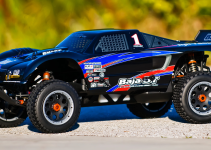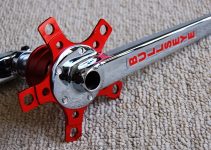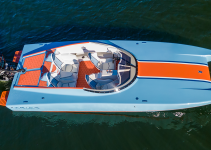I vividly recall the sense of intrigue that overcame me when I first encountered a boat unlike any other that I had seen before. Its design communicated a distinct identity, exuding a presence that left no doubt about its purpose. Every element of this tunnel hull was designed with a single objective—to dominate offshore races. The boat that captured my attention was an Argo catamaran.

The Argo Cat 23 is a high-performance boat in pure form. It is analogous to the legendary Chevrolet COPO or 1LE Camaros that were stripped-down, minimalistic cars equipped with the largest engine possible. This is a boat that speaks to the people that desire visceral performance above anything else, and the Argo 23 delivers precisely that.
The original Argo tunnel hull that would go on to sire numerous models was conceived in Finland by veteran racers and boat builders Pentti and Harry Fabritius. Over the decades, the Fabritius brothers would develop many enduring tunnel and V-bottom hulls, with the Argo Cat 23 representing the culmination of their efforts to produce fast and efficient race-winning hull designs. Being designed strictly for no-compromise, maximum performance, the Argo 23 is a pure race tunnel hull that is not a derivative of a pleasure model and was designed from the outset for one singular purpose: to dominate its rivals in offshore racing.

Up until very recently, only a small handful of Argos were imported into the United States, so obtaining one of these boats for an evaluation would be very difficult. But that situation has changed, and we will soon see this superb high-performance cat prowling the waterways here in America to shake up a resurgent popularity in sub-30 foot ultra high-performance tunnel hulls.

In 2020, eight-time Finnish national offshore racing champion Dennis Westerholm acquired the molds for the Argo Cat 23 with the goal of introducing this acclaimed race hull to American waters. Full Throttle Powerboats in Jacksonville, Florida was chosen to produce the American Argo Cat 23.
The Argo Cat 23 distinguishes itself from many high-performance catamarans with its unified hull and deck design that is responsible for the Argo’s exceptional handling attributes. Like traditional tunnel hulls, it generates lift by compressing air between the sponsons as speed increases. However, the Argo takes this further—its cambered deck accelerates airflow above the boat, creating a low-pressure zone that enhances lift. A cross-sectional view of the hull reveals a profile strikingly similar to that of an airplane wing. Making any modifications to either the deck or hull must be carefully considered. The latest incarnation of the venerable 23 is known as the ‘Widebody’ due to its augmented tunnel width. Interestingly, the tunnel width converges slightly toward the stern, presumably to produce added lift aft.

Before any boats were to be produced here, Westerholm knew that the Argo’s interior configuration would need to be modified to increase the boat’s practicality for general, non-competition use while retaining the boat’s impressive performance. He reimagined it as a “2+2” seating layout, aiming to make the boat more practical for everyday use. Originally, the Argo’s cockpit positioned the driver and navigator sitting one behind the other to keep the deck streamlined and the boat’s front profile as slim as possible, thereby increasing aerodynamic efficiency. Extensive testing performed by Westerholm indicated that the new four-seat deck design configuration did not negatively affect the Argo’s exceptional performance characteristics.

I met up with Argo’s North American brand manager, Mike Schafer for some river running on his Argo Cat 23 with a Mercury Racing 300XS on the transom. Schafer’s Argo is the new 2+2 Widebody model, able to seat four. Schafer’s Argo was produced in Finland; however Full Throttle Powerboats has begun production of the boat here in Florida. The cockpit is somewhat narrow, though not restrictive at all. All areas within the hull are easily accessible for storage and inspection.

The Argo planes and accelerates very quickly, and I have not observed any instability while rapidly reaching 100 MPH. The hull tracks and handles superbly, exhibiting remarkable agility in turns that would be characteristic of a much smaller hull. Indeed, for its size the Argo Cat 23 is a very lightweight hull, weighing approximately 900 pounds. Sharp turns at various speeds are handled with ease, with every maneuver telegraphing to the driver that the Argo is a driver’s boat, being at its best when pushed hard. The Argo responds very quickly to engine trim commands, enabling the boat to rapidly drop the bow down to carve around a turn, then with equal alacrity a tap of positive trim to lift the bow up quickly to power out of a turn. The feeling is intoxicatingly invigorating.

Now that Argos are being produced here in Florida, I anticipate that we will begin to encounter more of these very unique cats on our waterways. Following this will be comprehensive in-depth analysis of the Argo 23, where I will expand on the handling characteristics, stability, and speed of this exceptional, race-forged tunnel hull design. To that end I will be utilizing Aeromarine Research’s unparalleled Tunnel Boat Design Program to gain additional insight into the Argo’s performance potential.
In addition to the Scream And Fly website, please check our social media pages for more updates and details concerning this remarkably capable high-performance catamaran.
Please be sure to follow and subscribe to our Instagram, Facebook Group and YouTube media channels.

































































